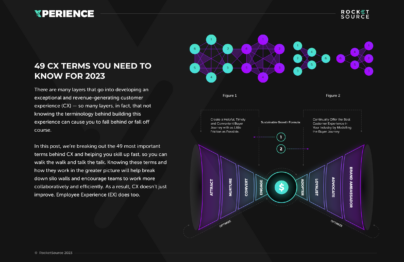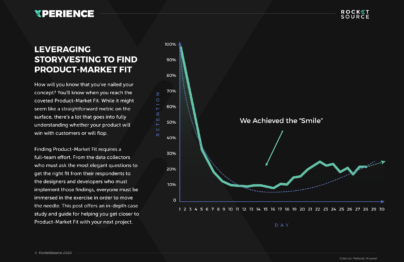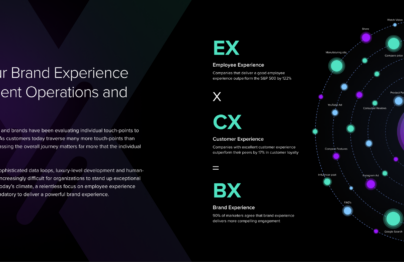Data humanization refers to the lens through which data points are interpreted by organizations. While organizations today are flush with data and analytics, it’s the context added around qualitative and quantitative data points that truly extract the insights needed to make human-centric business decisions.
Humanization is essential to drawing deeper insights from data sets and making strategic decisions rooted in empathy. It is this contextual shift that differentiates data-driven organizations from insights-centric organizations. Data-driven organizations let the data tell the team what to do. Insights-centric organizations take the data at face value, and then process, study, test, and infuse the person behind the data points as they extract insights. While both modes of operation require data, only one humanizes that data to find out-of-the-box solutions that have the potential to push the company up the S Curve of Growth.

Data Humanization Breeds Disruption
The human brain isn’t wired to look at rows and columns of data point after data point and make sense of what the swell of information means on a human level. Instead, humans can extract the patterns and tell a story via those data points based on what the big picture shows happening.
It’s this pattern recognition ability that allows teams to tame the data overwhelm and add insight into what’s happening behind the analytics. With those insights, teams can spot consumer trends, grow revenue faster, disrupt markets and deliver superior results time and again.
Data Humanization Requires Qualitative and Quantitative Data
Many organizations think of data exclusively as facts, figures, numbers, and decimals. But data comes in a variety of forms that extend well beyond spreadsheets. Data humanization happens when teams can pair quantitative data, such as customer satisfaction scores, Net Promoter scores, and a swath of other measures, alongside qualitative data. In pairing these two types together, teams can identify broader trends that dig into human motivations and behaviors at scale.
The truth is that teams must use both types of data points to get to the heart of human behavior. Qualitative alone isn’t sufficient. Neither is quantitative. Data humanization happens when the two types of data collection overlap, giving detailed insights into emotional and logical triggers that drive purchase and user behaviors.
Leverage Data Humanization for Better Customer Experiences
When it comes to leveraging data humanization, startups are often at the advantage. That’s because they’re immersed in what’s happening at the ground level. Founders roll up their sleeves in all areas of the business, talk to customers, observe customers in their buying setting, and use those insights to understand how to improve the customer’s experience.
Enterprises can have this same level of insight by humanizing big data and gathering enough of these grassroots insights to justify big shifts and disruptive strategies. By finding the middle ground between distance and up-close-and-personal approaches to data collection, teams can gather insights and use them to define a unique customer journey rooted in empathy. The goal is less about gathering more data than the competition, but rather humanizing the data and analytics at your disposal to tell the right story that will lead to a superior customer experience.
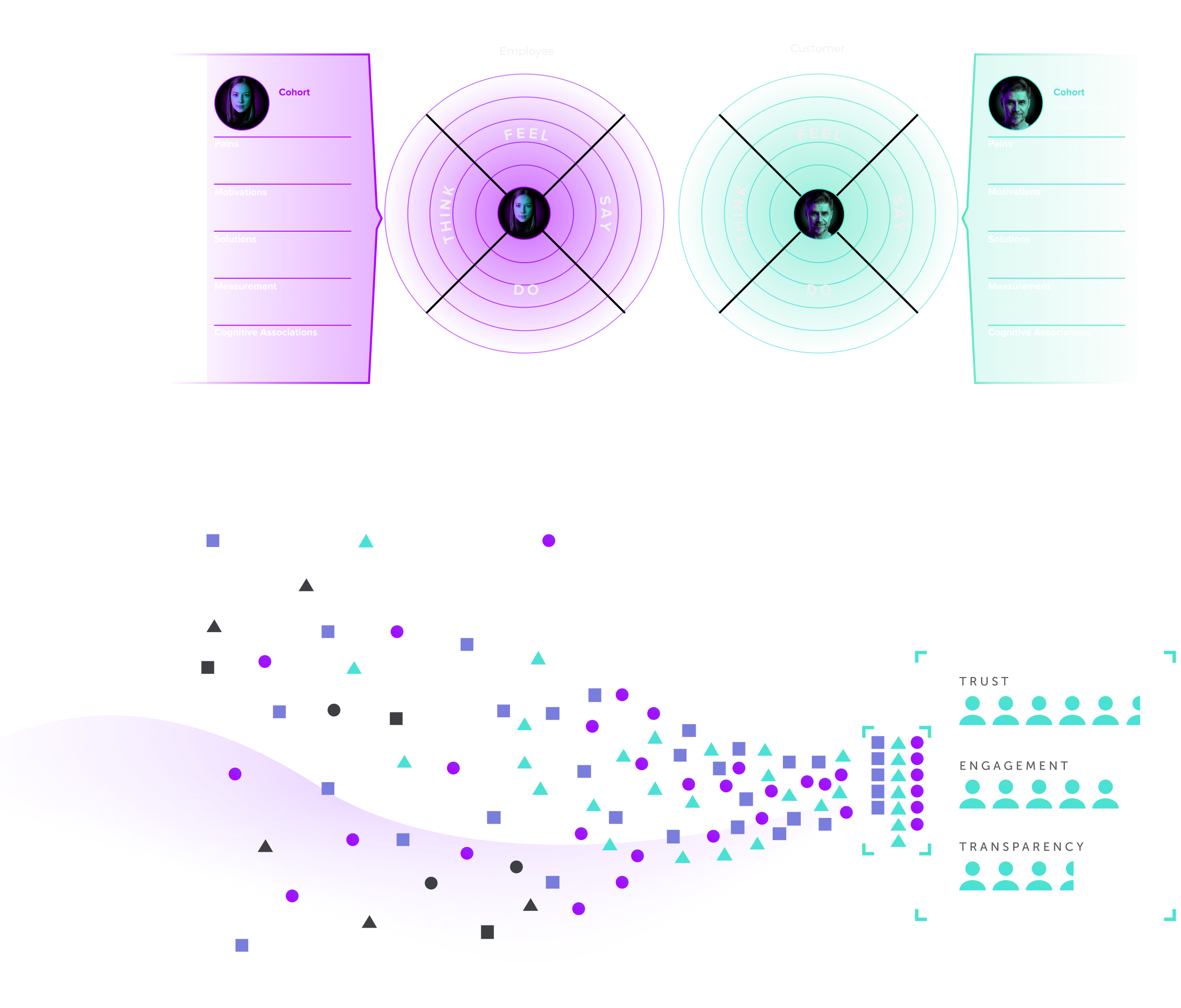
Data Humanization is Paramount in Modern Enterprise Organizations
With the right, humanized insights working as the wind in teams’ sails, enterprise organizations are better equipped to make big updates to their organization. When approaching data through the lens of finding the story of the people behind the points, teams are able to bolster customer experiences and employee experiences alike.
Improving Customer Satisfaction
People are at the heart of facts, figures and statistics. By using that data to determine what’s happening with the customer before, during and after the purchase process, teams are able to think like an anthropologist, practice consumer psychology, and hypothesize like a scientist to uncover ways to consistently improve the customer satisfaction scores (CSAT).
Building Retention
Equipping teams with the right insights is the first step toward empowering employees to make stronger decisions. When teams are able to become insights-centric in their problem-solving, everyone wins. Employees are happier in their work because they can see the impact they’re making in the world. Customers are happier because they feel organizations understand their needs. Ultimately both improvements build retention across the board.
Gain Internal Buy-In
When data gets humanized, it becomes harder to refute. Rather than feeling like teams are playing a guessing game in the boardroom, they’re better able to identify with the data in front of them and weave a more accurate story about what’s happening in the market. That story is what drives buy-in among teams and among the stakeholders in each new strategic initiative.
Accelerate Revenues
Revenue acceleration doesn’t start by spurring teams along toward new KPIs or North Star Metrics. Instead, revenues gain momentum when data is humanized and teams are sent in to solve the root causes of core roadblocks holding the organization back from success. In uncovering consumer motivations and behaviors, teams can better align their role and strategies with the overarching customer and brand experiences.
Customer Experience (CX) Terms
- 360° Degree View of the Customer
- AI Ops
- Barlow Bands
- Behavioral Triggers
- Bow Tie Funnel
- Brick-to-Click
- Business Impact Analysis (BIA)
- Cognitive Computing
- Cohort Analytics
- Content Mapping
- Conversational User Guidance
- Customer Data Profile
- Customer Experience (CX)
- Customer Friction
- Customer Insights Map
- Customer Journey
- Customer Journey Mapping
- Customer Satisfaction (CSAT)
- Customized Ratios
- CX Intelligence
- CX Led Growth
- CX Metrics
- Data as a Product (DaaP)
- Data as a Service (DaaS)
- Data Culture
- Data Driven
- Data Engineering
- Data Fabric
- Data Governance
- Data Humanization
- Data Hygiene
- Data Looping
- Data Mapping
- Data Mining
- Data Modeling
- Data Monetization
- Data Swamp
- Data Visualization
- Data Warehouse
- Data-Centric
- Descriptive Analytics
- Diagnostic Analytics
- Digital Asset Management (DAM)
- Digital Transformation
- Dirty Data In Dirty Data Out
- Embedded Intelligence
- Empathy Mapping
- Employee Data Profile
- Employee Experience (EX)
- EX to CX Data Mapping
- EX to CX Mapping
- Experience Management (XM)
- Gap Analysis
- Generative AI
- Human-Centered Design (HCD)
- Journey Analytics
- Machine Learning (ML)
- Managed Agile Services on Demand
- Modified Hoshin
- North Star Metric
- Party Data
- Pathway to Purchase
- Predictive Analytics
- Product-Market Fit Mapping
- Real Time Design Looping
- Revenue Acceleration
- RevOps
- S Curve of Growth
- Stack Impact Analysis
- StoryVesting
- Table Stakes Testing
- The 3 P’s
- User Experience (UX)
- User Insights Map
- User Interface (UI)
- Voice of the Customer (VoC)
- Voice of the Employee (VoE)
- World Cloud Generator Sentiment Mining
- X Analytics

